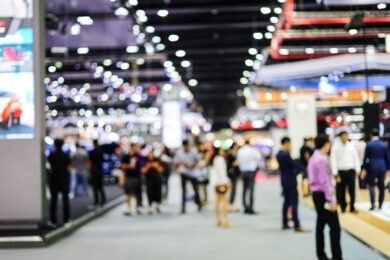It’s easy to look at attendance numbers and report that the meetings and events industry is and has been growing—but why is it growing? And how do we help keep that upward trajectory going?
Hospitality giant Marriott International has announced a partnership with meeting leaders Professional Convention Management Association (PCMA) to answer that question. They delved into the trends they anticipate will shape the future of meetings in order to understand what aspects of today’s events are encouraging attendance and interaction.
In a time where “disruption” has become the king of all buzzwords, the two companies have compiled a group of experts from myriad fields to focus on personalized technology, wellness, collaboration, and other future meeting trends.
“In 2015, the majority of both meeting professionals and meeting venues reported growing attendance and revenues,” said Deborah Sexton, PCMA president and CEO. “While we are excited about these strong results, we also need to remain focused on our industry’s future. Together, PCMA and Marriott International identified both the trends on the horizon and the actions we need to explore to prepare our constituents to leverage these trends.”
The group of experts compiled by PCMA and Marriott consists of those in data science, media architecture, and sharing economy fields. Together they identified five actions planners will need to take in order to leverage meeting engagement in the next three-to-five years.
1. Use Sensory Analytics to Measure Engagement in Real Time
Advancements in data analytics, as well as physical sensors, are simplifying the ability to collect data about attendees’ physical experiences, analyze the inputs and make adjustments in real time. This will allow planners and presenters at a given event drive greater impact, rather than learning after-the-fact that attendees lost interest midway through the event.
Sensor technology, which will measure things like heart rate, eye movement, and stress levels, will have the power to measure engagement levels of individuals and groups so that events can be tweaked in real time to ensure a successful outcome.
2. Support Tribalization and Collaboration
One of the trends that has surfaced in the last few years is a move away from individualism and into group or “tribal” activities.
As a result, events must become more about the list of attendees and less about the speakers and their topics. The meeting must foster small group connections that supports collaboration through adjustable infrastructure and technology.
“Platforms like Facebook and Instagram allow access and exposure to vast areas of interest, and I think there’s more comfort now in how that translates into physical gatherings and communities,” said Matthew Von Ertfelda, vice president and team lead of Marriott’s Insight, Strategy, and Innovation Team.
3. Let Attendees Forge Their Own Paths
Today people have countless options for how they consume media. That freedom to choose can (and should) also be reflected in your events and meetings.
“I don’t want the organizers to determine my experience for me,” said Sherrif Karamat, COO of PCMA. “Instead, I want them to create a platform where I can personalize my experience.”
A dynamic environment that has the potential to change at a moment’s notice will give attendees a sense of ownership and self-discovery. Throw out the rigid agendas and concrete floor plans.
4. Take Wellness to a Whole New Level
Anyone whose attended a meeting in 2015 will agree that the focus on personal wellness has blown up. And it’s not just physical. It encompasses one’s mental, emotional, and social state, too.
This means that planners must provide options to suit myriad individual health goals.
This is what Suzy Badaracco, president of Culinary Tides, referred to as a “Pandora’s Box” trend, stating, “Once opened, it’s going to be almost impossible to close; there are no adversaries coming to the forefront.”
Hotels will also feel the effects of this change, changing not just their menu options, but even making details such as lighting and airflow customizable.
5. Prepare for Immersive Telepresence
What once sounded like a stretch of the imagination is now a very real option for remote meetings. Immersive telepresence brings speakers and attendees from around the world together in a single room.
To adapt, the meetings industry must find ways to work with new formats that seamlessly convey content and ideas with similar—if not stronger—storytelling than in-person presentations and gatherings, and must appeal to attendees in-person and remote alike.
Is your business prepared for these and other future meeting trends? Tell us what else you anticipate from attendees in 2016 and beyond.




